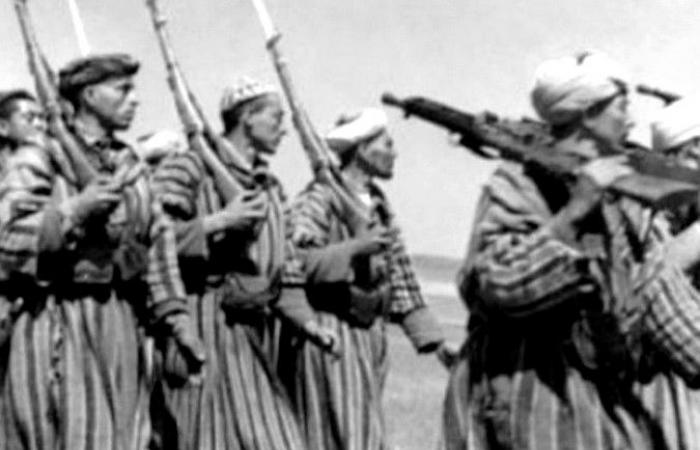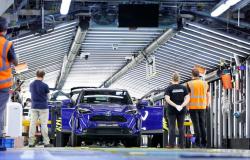
The Moroccan people, and at their head the Family of Resistance, celebrate on Sunday the 55th anniversary of the recovery of Sidi Ifni, one of the major events of the heroic struggle for independence and the completion of the territorial integrity of the Kingdom.
Indeed, this historic and memorable date which saw the national colors raised on June 30, 1969 in the sky of Sidi Ifni, is commemorated each year with joy and joy by all Moroccans.
On this occasion, the High Commission for Veterans and Former Members of the Liberation Army (HCAR) stressed the importance of this popular uprising that broke out throughout Morocco, particularly in the Atlas and Rif regions, after the establishment of the protectorate on March 30, 1912, to commit to defending the freedom and independence of the Kingdom.
The High Commission recalled that the tribes of Aït Baâmrane, and in the same patriotic spirit that animated the different regions of Morocco, demonstrated perseverance, courage and heroism to thwart the plans of the Spanish colonial authorities aimed at definitively attaching the region to Spain.
Thus, the Aït Baâmrane, men and women of legendary bravery, were the spearhead of the national resistance in the South of Morocco and the suppliers of weapons to the nationalists of the North, through their resistance cells, thus affirming their attachment to their Moroccanness and to the glorious Alaouite Throne.
In fact, on November 23, 1957, these tribes had launched a major uprising against the Spanish presence, which gave rise to fierce fighting in several localities, notably in Teblkoukalt, Bizri, Bourssas and Tighza.
Despite the modesty of their means, the fighters of Aït Baâmrane carried out a series of attacks in 1957 against 16 posts of the Spanish military, thus marking the first step towards the recovery of freedom and independence.
The fight then took on its full dimension, when in 1963, the late HM Hassan II took the opportunity of a stopover in Madrid to remind the Spanish head of state at the time that Morocco legitimately heard , take back the Ifni enclave under its sovereignty, so that the Kingdom manages, after a long period of claims and intense negotiations initiated under the aegis of the United Nations committee for decolonization, to assert its natural right and legitimate recovery of Tarfaya in 1958 and Sidi Ifni on June 30, 1969.
On May 18, 1972, the city of Sidi Ifni had the privilege, after its retrocession, of welcoming the late HM Hassan II, a visit which symbolizes the strategic importance that the Moroccan Sovereigns have always granted to all the southern provinces.
In this wake, the High Commission for Veterans and Former Members of the Liberation Army highlighted the content of the Speech of His Late Majesty Hassan II, during this visit to the city of Sidi Ifni.
Indeed, the recovery of Sidi Ifni constitutes a source of pride for all Moroccans, due to its symbolism and historical value, and allows us to recall the epics of the national struggle for independence and national unity, drawing inspiration from the values of resistance, global mobilization and the strong attachment of the Moroccan people to the homeland, from the Sahara to the north of the Kingdom.
The recovery of the city represented for the Kingdom only the starting point of a long path of struggle for the completion of its territorial integrity and which was crowned, on November 6, 1975, by the glorious Green March, initiated with genius by late HM Hassan II for the liberation of the Moroccan Sahara.
This latest victory came at the right time to crown the heroic struggle led by the Moroccans. Indeed, the national flag was raised on February 28, 1976 in the city of Laâyoune, sounding the death knell for the colonial presence in the Moroccan Sahara.
Thus, since the recovery of the southern Moroccan provinces, the momentum of development has continued under the enlightened leadership of His Majesty King Mohammed VI who, in 2015, endowed these southern provinces with a new model of economic development with a budget envelope of several tens of billions of dirhams.
The numerous projects and projects implemented in this context suggest a promising future for a region destined to become an essential logistics hub and a true regional and international hub.
To commemorate this significant event in the epic national struggle for the completion of the territorial integrity of the Kingdom, the High Commission has planned a program of festivities including a meeting on July 1, which will be marked by interventions highlighting forward the scope and meanings of this glorious anniversary.
In addition, a tribute will be paid to several former resistance fighters and former members of the liberation army, as well as the distribution of financial aid for those entitled to it.





